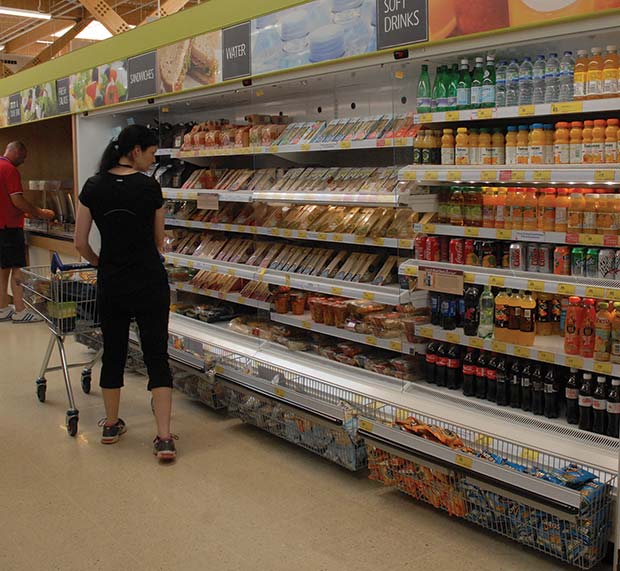Cold aisle syndrome is the chilly and often uncomfortable temperature experienced by shoppers in the refrigerated departments of supermarkets and convenience stores. It is caused largely by the spillage of cold air from refrigerated, open front multi deck food display cabinets. Many retailers recognise that cold aisle syndrome can compromise the shopping experience and, during seasonal cold periods, operate costly heating regimes and cold air retrieval systems to temper the chill factor.

Adande claims that its patented Aircell air flow management system significantly reduces cold aisle syndrome, without the need for supplementary HVAC systems. To confirm the existence and extent of the phenomenon, the company commissioned independent research to measure store temperatures within the refrigerated departments of several supermarkets.
Representatives visited the stores of six major UK retailers. At each store, temperature, relative humidity and dew point readings were recorded in a non-refrigerated area to establish ambient conditions. The same measurements were then taken in refrigerated sections of the stores, including dairy, convenience food, produce and pre-packed fresh meat aisles. All data was recorded at a consistent 600mm distance from the refrigerated cabinets, using a USB data logger, with readings taken at 10 second intervals.
Ambient temperatures varied between 16.5ºC and 19ºC at the six stores visited and cold aisle syndrome was found to exist in all of the refrigerated departments at every store. On average, measurements taken in refrigerated departments were up to 25% – 30% colder than the store ambient temperatures. The extent of cold aisle syndrome was consistently greatest in pre-packed fresh meat aisles, with the most significant temperature discrepancy measured at 11.5ºC, some 6.5ºC lower than the store’s ambient temperature of 18ºC.
Aircell has been designed, amongst other aims, to limit cold aisle syndrome by dividing the cabinet’s merchandising envelope into separate cells between shelves. The smaller cells have a shorter air column and independent management of air movement. The net result is less pressure on the air curtain of each cell and a substantial reduction in cold air spillage from the case. By contrast, conventional open front multi deck cabinets have a single column of cold air from the top to the bottom of the merchandising envelope. As cold denser air sinks, a stacking effect is created and pressure builds at the base of the air curtain. This causes chilled air spillage from the cabinet, creating cold aisle syndrome.
Adande Refrigeration’s Managing Director, Ian Wood, stated: “Aircell can make a significant difference to customer comfort levels. Its ability to reduce cold air spillage from the multi deck cabinet also has positive implications in terms of energy consumption and temperature stability, without the need to fit glass doors, which are regarded by many as physical barriers to shopping.”




Comments are closed.